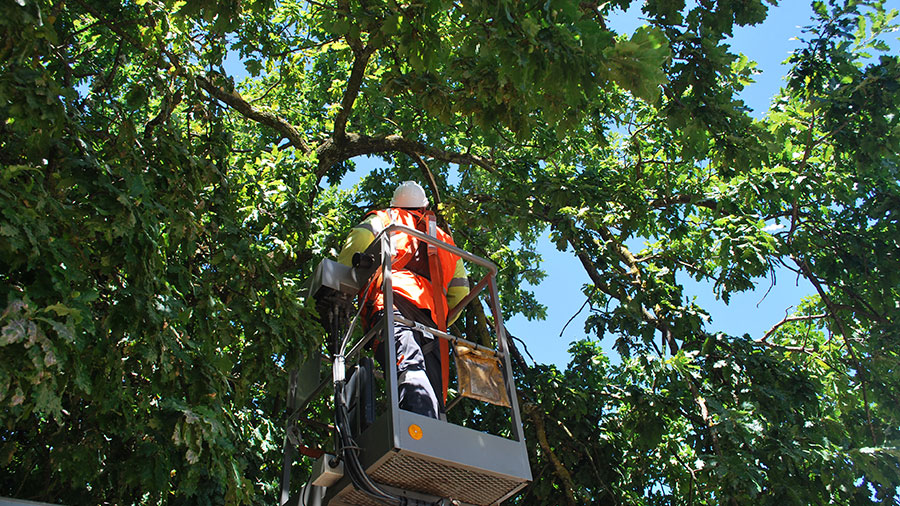All Categories
Featured
Table of Contents
- – What Is The Best Tree Arborist Wollongong Prod...
- – What Is The Best Tree Loppers Wollongong Busin...
- – What Is The Best Tree Cutting Services Wollon...
- – How Do I Choose A Wollongong Council Tree Rem...
- – What Is The Best Tree Loppers Wollongong Com...
- – What Do Tree Arborist Wollongong Services In...
- – What Is The Best Arborist Wollongong Company?
Tree roots play an important duty in supporting the dirt, as they permeate deep into the ground, anchoring it and protecting against erosion. When trees are gotten rid of, the lack of these origin systems leaves the soil extra prone to disintegration caused by wind and rains. Tree elimination experts might recommend soil stabilization techniques to secure the ground from disintegration.
The removal of trees can create open spaces that are prone to weed invasion. When trees are existing, their dense canopies typically shade the ground, restricting the quantity of sunshine that reaches the dirt. Nevertheless, after the elimination of trees, these open areas get increased sunshine, giving perfect conditions for weed growth.
What Is The Best Tree Arborist Wollongong Product?
They may advise the use of compost, which acts as a protective barrier on the dirt surface area, stopping weed seeds from germinating and reducing weed growth.
The visibility of trees fosters a rich and diverse neighborhood of dirt germs. Tree roots provide a resource of raw material, exudates, and nutrients that sustain the development and task of valuable soil microbes. When trees are eliminated, the lack of their origins can disrupt the fragile balance of the soil's microbial ecosystem.
To address the effects of tree reducing on dirt pH, tree removal specialists can provide important suggestions. Based on the outcomes, experts can suggest pH change techniques, such as including lime to raise dirt pH or including essential sulfur to reduce it.
What Is The Best Tree Loppers Wollongong Business?
It refers to the compression of dirt particles, causing reduced pore area and increased dirt density. This compaction can adversely impact the soil's capability to function ideally, influencing its water-holding ability, nutrition availability, and origin infiltration. Correct methods employed by tree removal professionals can help lessen compaction and protect the soil's capability to maintain water, and permit adequate air movement and cautious equipment handling.
The removal of trees can create open spaces that are prone to weed intrusion. When trees exist, their thick canopies typically shade the ground, limiting the amount of sunshine that reaches the dirt. However, after the elimination of trees, these open locations obtain raised sunshine, offering ideal conditions for weed development.
What Is The Best Tree Cutting Services Wollongong Business?
They might suggest the usage of compost, which acts as a safety obstacle on the dirt surface area, stopping weed seeds from sprouting and reducing weed development.
The presence of trees fosters an abundant and diverse neighborhood of dirt microbes. Tree roots offer a source of natural issue, exudates, and nutrients that support the development and activity of valuable soil microorganisms. When trees are gotten rid of, the absence of their origins can interfere with the fragile balance of the dirt's microbial ecological community.
To address the effects of tree cutting on soil pH, tree removal specialists can supply useful advice. Based on the outcomes, experts can suggest pH change techniques, such as including lime to increase soil pH or including elemental sulfur to lower it.
It describes the compression of soil particles, leading to lowered pore space and increased soil density. This compaction can negatively influence the dirt's capability to function ideally, impacting its water-holding ability, nutrition availability, and origin infiltration. Proper methods used by tree elimination experts can assist lessen compaction and preserve the soil's ability to preserve water, and enable for sufficient airflow and mindful tools handling.
How Do I Choose A Wollongong Council Tree Removal Service?

The elimination of trees can create open areas that are prone to weed intrusion. When trees exist, their thick covers commonly color the ground, limiting the quantity of sunlight that gets to the soil. After the elimination of trees, these open areas get boosted sunlight, offering ideal conditions for weed development.
They may advise the usage of mulch, which acts as a safety barrier on the soil surface, avoiding weed seeds from germinating and suppressing weed growth.

The visibility of trees promotes a rich and diverse community of dirt microbes. Tree roots offer a source of organic issue, exudates, and nutrients that sustain the growth and task of useful dirt microbes. However, when trees are removed, the absence of their roots can interfere with the delicate balance of the dirt's microbial ecological community.
What Is The Best Tree Loppers Wollongong Company?
To resolve the results of tree reducing on dirt pH, tree elimination professionals can offer valuable guidance. Based on the results, specialists can recommend pH change approaches, such as adding lime to increase soil pH or including important sulfur to reduce it.
It refers to the compression of dirt bits, causing lowered pore space and boosted dirt density. This compaction can adversely impact the soil's capability to function ideally, affecting its water-holding capability, nutrient schedule, and root penetration. Correct strategies utilized by tree elimination specialists can aid lessen compaction and preserve the dirt's capability to retain water, and permit sufficient airflow and mindful equipment handling.
What Do Tree Arborist Wollongong Services Include?
The removal of trees can create open rooms that are vulnerable to weed invasion. When trees are existing, their dense canopies commonly shade the ground, limiting the quantity of sunshine that gets to the soil. After the elimination of trees, these open areas obtain raised sunshine, offering perfect problems for weed development.
They might suggest the usage of compost, which acts as a safety barrier on the soil surface area, protecting against weed seeds from germinating and subduing weed growth.
The presence of trees cultivates a rich and varied neighborhood of soil germs. Tree roots offer a source of raw material, exudates, and nutrients that sustain the development and task of useful soil microbes. When trees are gotten rid of, the absence of their roots can interrupt the fragile equilibrium of the dirt's microbial environment.
What Is The Best Arborist Wollongong Company?
To deal with the impacts of tree reducing on dirt pH, tree removal professionals can offer useful recommendations. Based on the outcomes, specialists can suggest pH adjustment methods, such as including lime to raise soil pH or incorporating important sulfur to reduce it.
It describes the compression of soil particles, causing lowered pore space and boosted soil density. This compaction can negatively affect the dirt's capacity to operate optimally, impacting its water-holding capacity, nutrient availability, and origin penetration. Proper methods used by tree elimination professionals can aid minimize compaction and maintain the soil's ability to retain water, and permit sufficient air movement and cautious equipment handling.
Table of Contents
- – What Is The Best Tree Arborist Wollongong Prod...
- – What Is The Best Tree Loppers Wollongong Busin...
- – What Is The Best Tree Cutting Services Wollon...
- – How Do I Choose A Wollongong Council Tree Rem...
- – What Is The Best Tree Loppers Wollongong Com...
- – What Do Tree Arborist Wollongong Services In...
- – What Is The Best Arborist Wollongong Company?
Latest Posts
What Is The Best Stump Removal Wollongong Software?
What Is The Best Wollongong City Council Tree Removal?
What Is The Best Tree Cutting Wollongong Service?
More
Latest Posts
What Is The Best Stump Removal Wollongong Software?
What Is The Best Wollongong City Council Tree Removal?
What Is The Best Tree Cutting Wollongong Service?